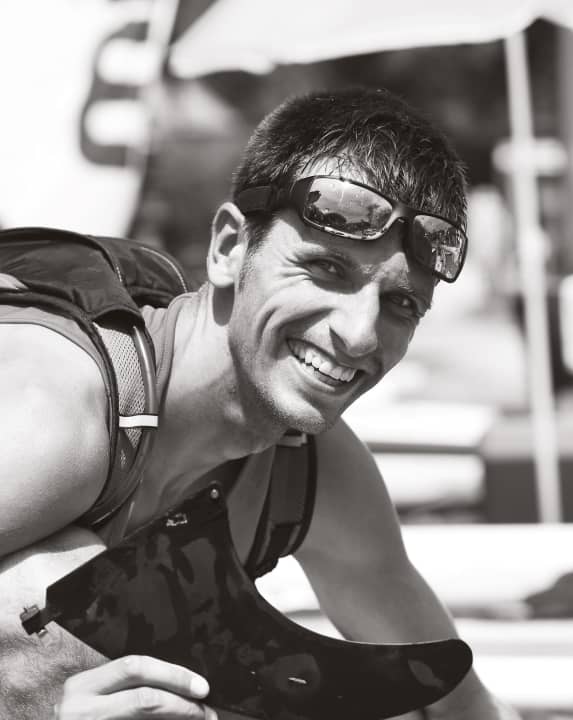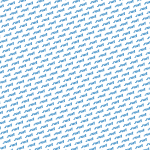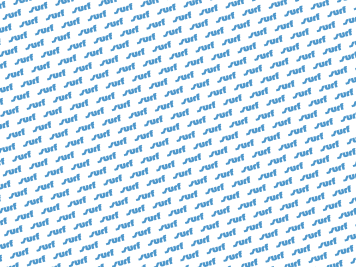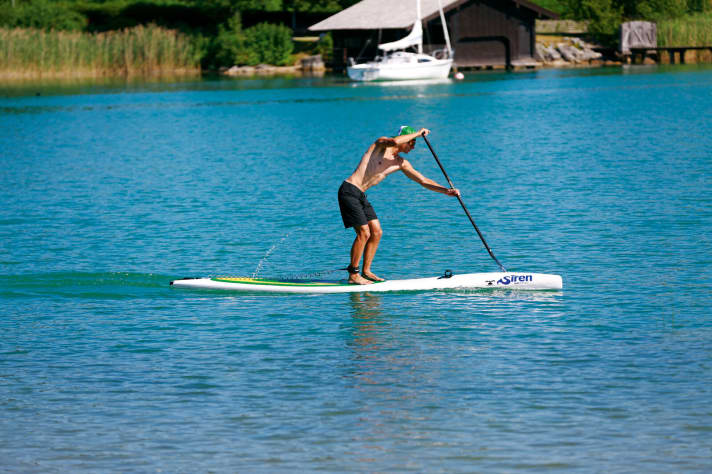
Driving technique FASTER PADDLING
Effective paddling can be divided into four phases - just like a modern four-stroke engine. Each phase must function optimally on its own and the individual phases must be harmonised as well as possible. In the engine, intake, compression, working and ejection run like clockwork. Normen Weber demonstrates to us how the four paddling phases should also run as smoothly and with as little loss of propulsion as possible on the board.
Piercing phase
The paddle "glides" into the water (image 1+2). Ideally without splashing and without splashing. The front arm is stretched as far as possible, the shoulder is turned as far forwards as possible and the paddle is immersed as far forwards as possible. While the paddle slides into the water, do not pull. This would be the typical "air stroke" that beginners often practise. Only when the paddle is completely submerged should pressure be built up as quickly as possible. Normen moves his upper body very far forwards and bends his knees. This is how races are paddled. Even in fast touring paddling, these movements are somewhat more moderate.
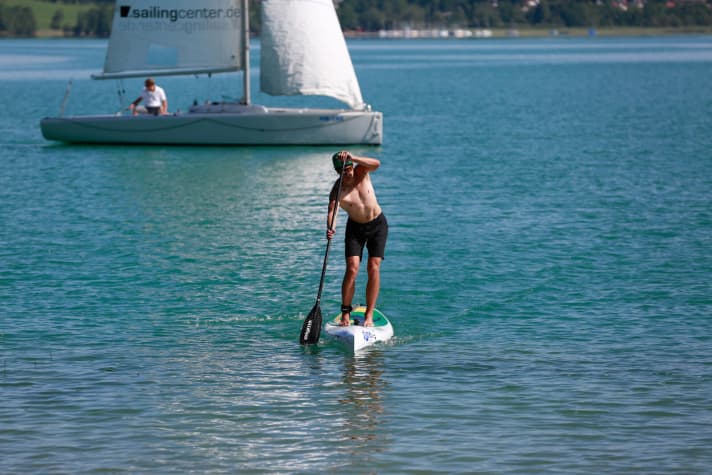
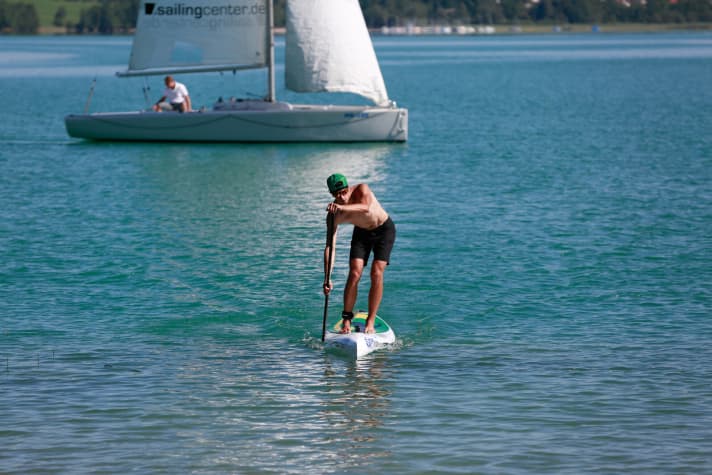
Pull phase
Speed is built up in the following pull phase (Fig. 3+4). The best pressure point is reached when the paddle is vertical in the water. The force is exerted by pulling with the arm that is first stretched and then slightly bent at the end of the stroke. This causes the upper body to straighten slightly. The film in your head is: The paddle is anchored in the water and you "pull" yourself forwards with the paddle and the board. The water is not scooped backwards. This phase is short and powerful and ends when the paddle blade reaches the level of your feet. "Everything you paddle behind your body is 70 per cent waste of energy and only 30 per cent propulsion," says Normen, explaining the theory.
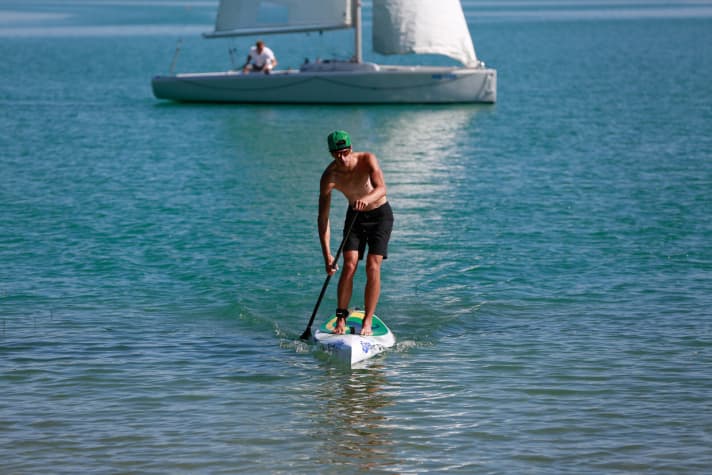
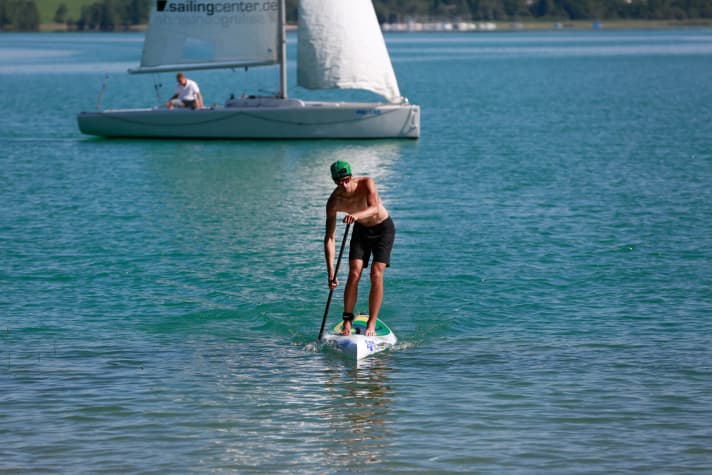
Excavation phase
The paddle is lifted out at this point at the latest (Fig. 5+6). Without using force and with a slight outward turn.
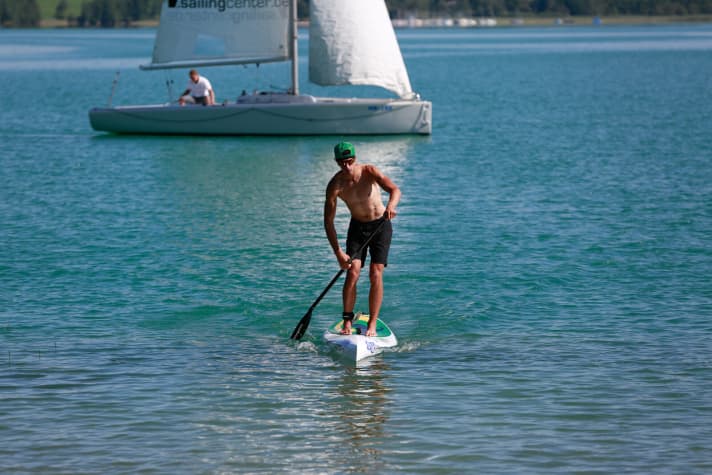
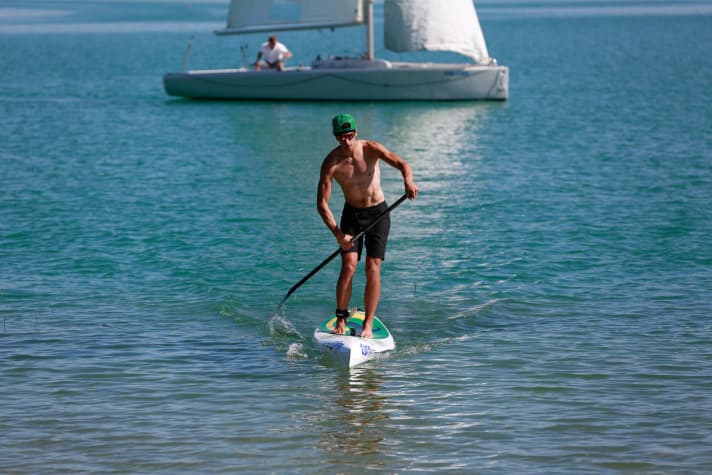
Relaxation phase
The trick here is to bring the paddle to the board smoothly and without unrest and to swing it forwards. This "swing phase" (Fig. 7+8) only goes so far forward that you still feel comfortable. The paddle lies loosely in your hands and all your arm muscles relax.
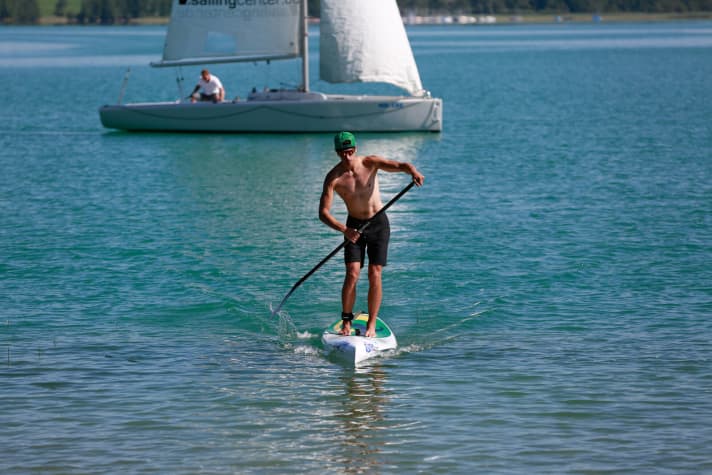
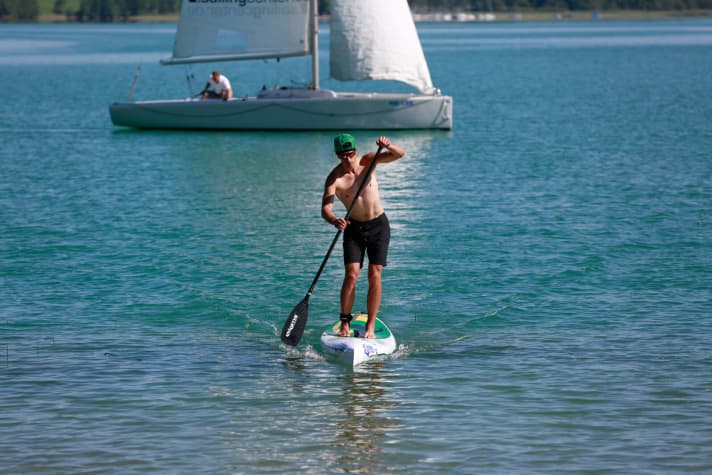
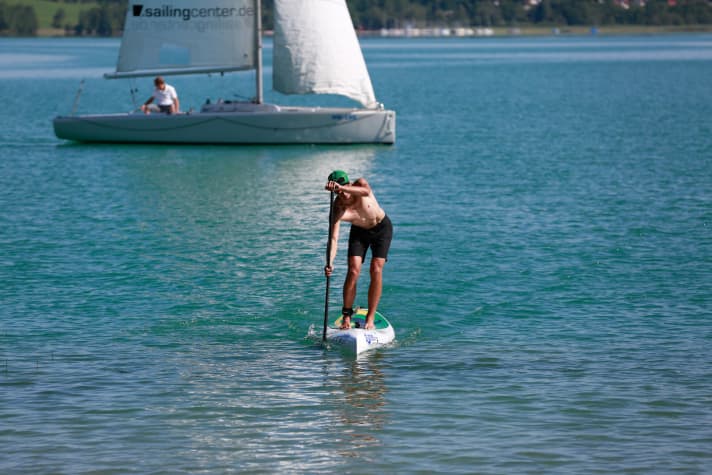
The sticking points from the side
The paddle is also vertical when viewed from the front (top image). The front arm is stretched far forwards during the insertion phase (image 1+2).


The pulling phase ends at the body at the latest (Fig. 3).

The upper body straightens up again on the paddle (Fig. 4). In the relaxation phase, the paddle lies loosely in your hands (Fig. 5+6). The maximum force is applied by using the back muscles, for which not only the arm extension is important, but also the forward rotation of the shoulder (Fig. 2).


The best power transmission is achieved when the paddle is vertical in the water (Fig. 8).
The optimum paddle length
In racing, you often see a very high paddling position, where the elbow is held well above the shoulder, sometimes overhead. Normen has moved a long way away from this: "The high elbow position has caused shoulder problems for many paddlers. For me, the paddle length is optimal when the elbow is exactly at shoulder height (pictures 7+8), at the moment when the paddle is fully inserted at the front (large picture above). Then you have optimum power transmission." Depending on how far down you go with your upper body or how low you bend your knees, you then have to choose the appropriate paddle length.


"At the moment, I'm using a 1.85-length paddle - with a height of 1.86 metres. I use the same length in sprint and long-distance races because I know that every race is decided in the sprint," says Normen, explaining his tactics. For the normal sporty paddler or touring paddler, slightly more moderate measurements apply: "It's different for touring, you go a bit slower, you don't go quite as far down with your upper body. I would choose a paddle that is a good ten centimetres longer for touring. I then don't go so far forwards with my upper body and then it also fits again with the elbow at shoulder height." The thickness of the board is also very important. Normen stands here on his race board, which is very thin in the stance area, just above the water level. On an inflatable board, which is usually 15 centimetres thick, the paddle must be up to ten centimetres longer than recommended.

"For racing, my paddle is about body length. The sporty recreational paddler chooses a paddle that is 10 to 20 centimetres taller, depending on the type of board." (Normen Weber)
